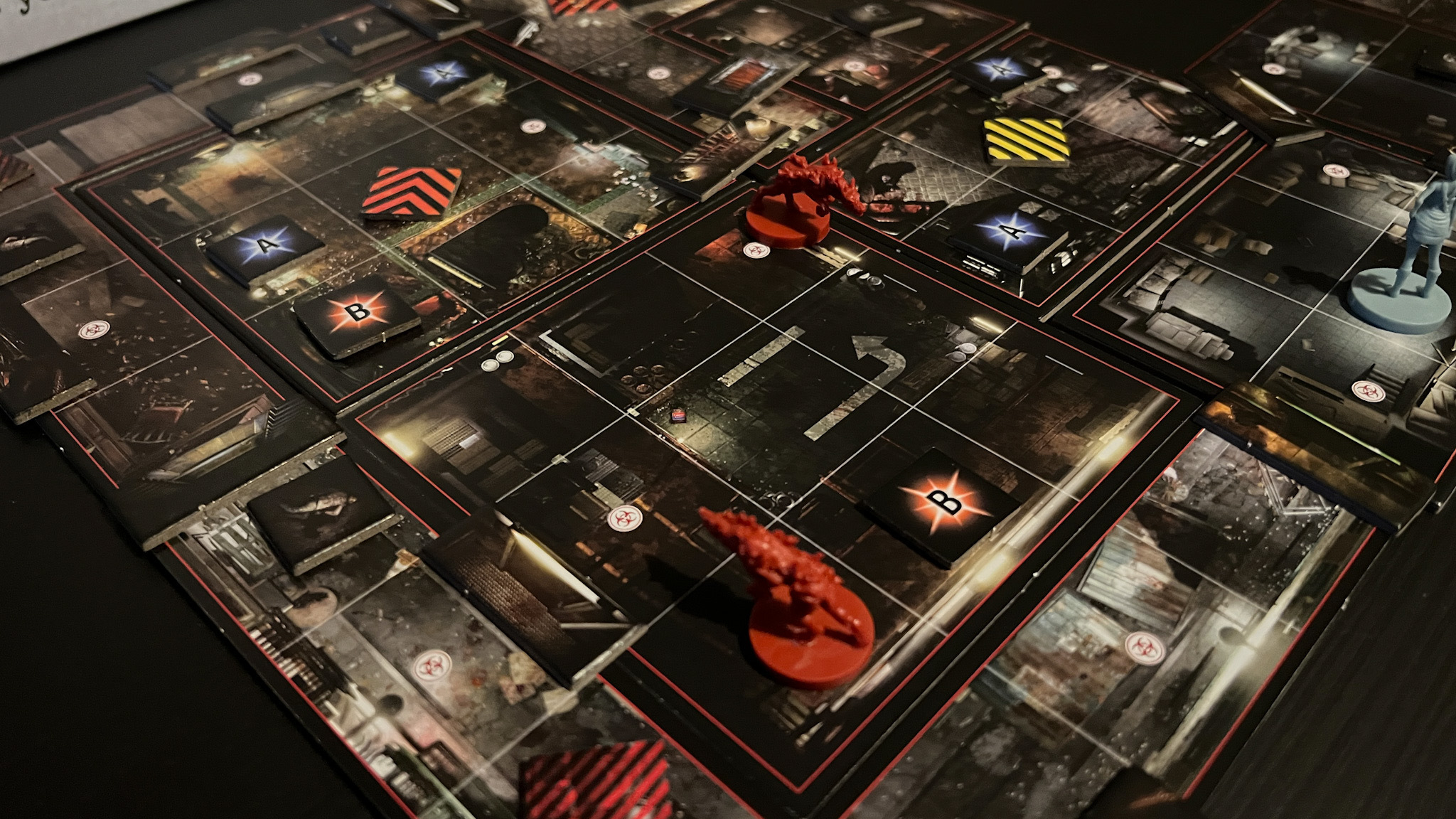GamesRadar+ Verdict
Resident Evil 3: The Board Game builds on the strategy and core mechanics of the previous iteration, bringing the atmosphere of the beloved series to tabletop with aplomb.
Pros
- +
Excellent atmosphere and tension
- +
Captures original mechanics and style
- +
Easy flow of gameplay with little down-time
Cons
- -
Setup is a bit long
Why you can trust GamesRadar+
Resident Evil 3: The Board Game hit our shelves earlier this year, following on from the resoundingly successful adaptation of Resident Evil 2 from the same team. In fixing a few player frustrations with component quality while tackling the sprawling story of the third Resi instalment, Steamforged Games (the folks behind 2021's Horizon Zero Dawn board game) has produced a truly excellent campaign adventure designed to keep you hooked from your very first steps on the streets of Raccoon City.
I sat down with Resident Evil 3: The Board Game for the full campaign and a few repeated scenarios, playing in both solo and multiplayer mode, to see where it fits in our best board games hall of fame. And even though Jill Valentine, Carlos Oliveira, Mikhail Victor, and Nikolai Ginovaef were all back to take on the horrors of those city streets, Nemesis was never too far away either...
What is it, and how does it work?

Price: $99.99 / £99.99
Developer: Steamforged Games
Game type: Co-op horror
Players: 1 - 4
Ages: 14+
Difficulty: Hard
Lasts: Minimum of 40mins per scenario
Resident Evil 3: The Board Game runs in much the same as Resident Evil 2 before it. Players have four actions each, played out however they like; walk to the next square, open a door, use an item, attack, etc. Then the enemy makes its move, moving one square closer to the nearest player if alerted, attacking if it collides.
As for combat, it still relies on dice - players roll for hits should they choose to spend precious ammo, and they also roll to evade any incoming attacks, dodging under a swipe and hopefully pushing the enemy away to boot.
There are out of sequence actions that can pop up out of turn as well. Enemies will automatically move one step closer when a character performs an attack, for example, and you'll need to roll to evade if starting your turn in the same square as one of your adversaries.
The board game does a fantastic job of transferring that gut-swirling feeling of panic
From there, Resident Evil 3: The Board Game plays out with faithful adherence to the ethos and atmosphere of the original video games. Players spread out across the city streets, searching for items, ammo, keys, and important items, taking on the odd boss here and there, and ultimately heading towards the Clock Tower to take on the final missions of the campaign.
However, with new encounters waiting behind every door, and a timer running through each scenario, this isn't a gentle stroll across town.
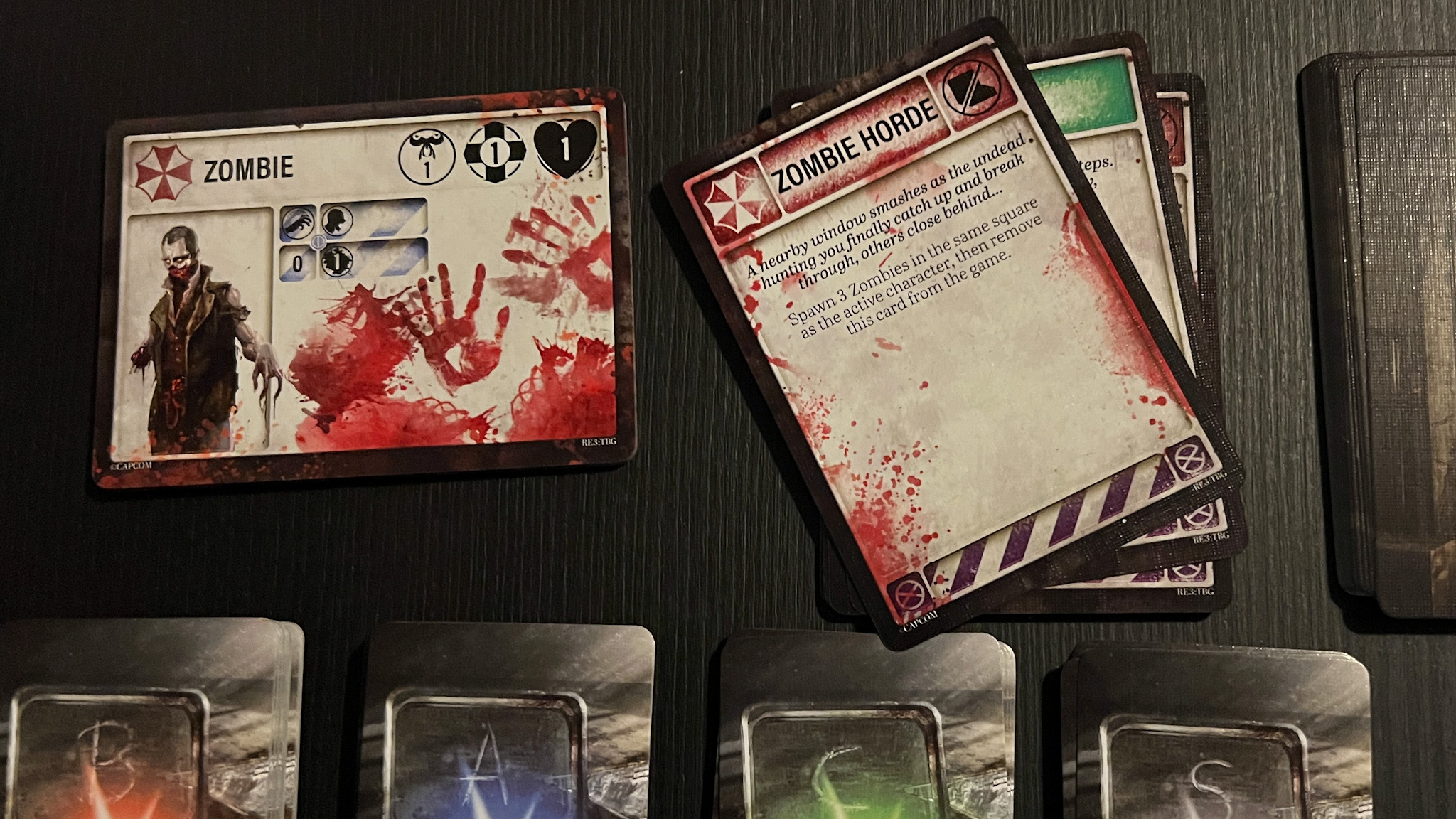
At the end of each player's turn, they draw a card from the tension deck. It's an incredibly engaging mechanic that usually leaves you all clear, but sometimes can present new challenges and enemies to overcome - completely flipping the narrative. If this tension deck runs out you've lost your scenario, but it can be refilled using typewriters scattered across the map.
What's it like to play?
There's a lot to digest when you first open the box, especially if you're a newcomer. I found that setup still takes a considerable amount of time - this definitely isn't one you'll be whipping out on a whim. It's made a little easier by the fact that the tiles are simple shapes, so you just need to find the right layout rather than digging through for specific pieces. However, getting everything out and ready sometimes stretches just beyond that sweet spot of anticipation.
Another niggling frustration lies in the box itself. Miniatures are all housed in their own plastic sheets, but once tokens and play pieces are popped out of their shipping sheets, there doesn't seem to be enough places to keep them all separate. Considering some pieces are only shipped in numbers of two or three, digging through piles of tokens can become a little frustrating and slow your setup and pack down as well.
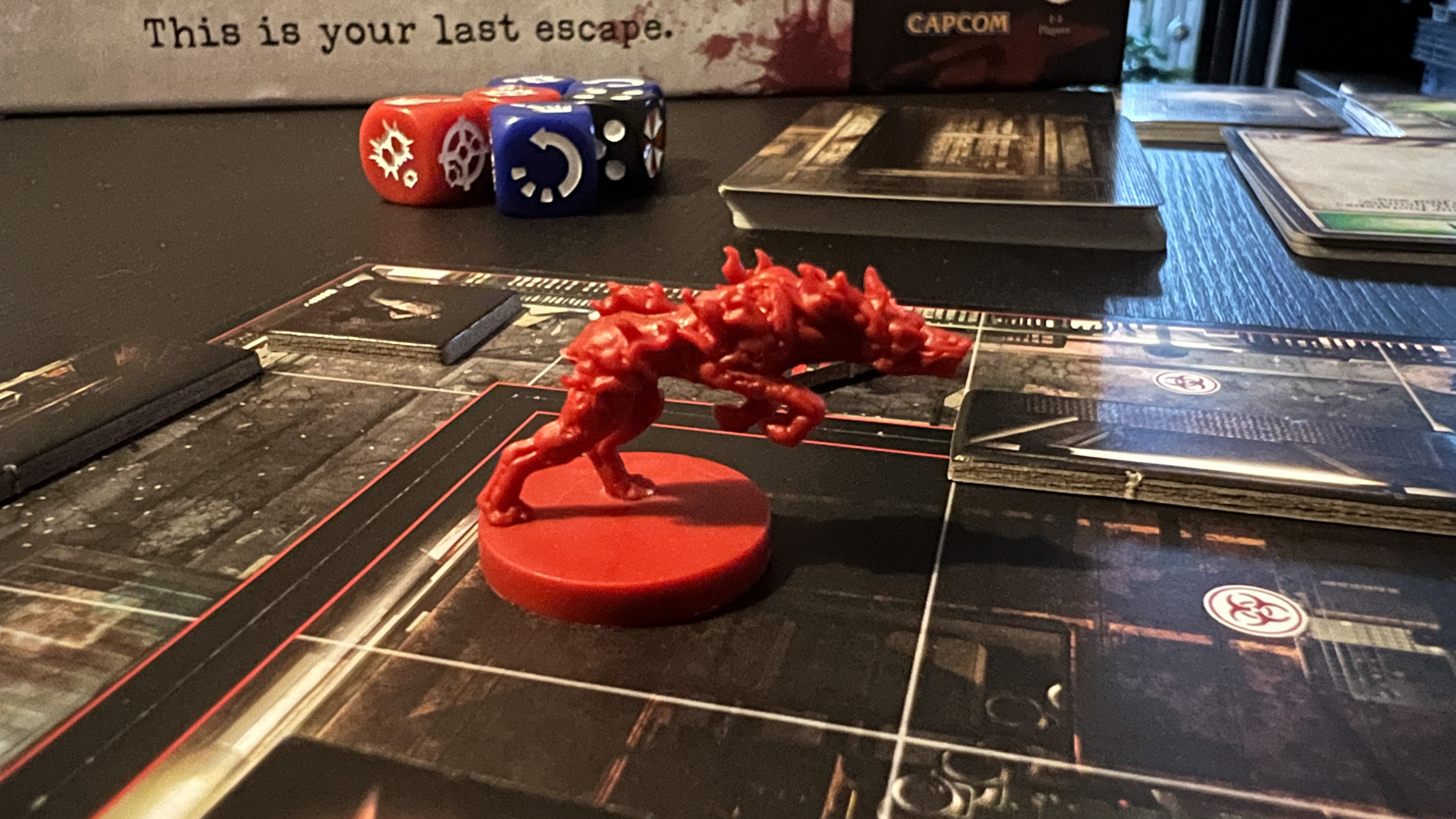
Once you're in, though, you're in. There's very little time between turns with a simple three-phase sequence and a set of rules and strategies that feel easy to slip into. Admin time is kept to a bare minimum, only confined to switching map setups between scenarios. That means you're free to keep your focus on the task at hand, and considering just how much every action matters, you'll need to keep that focus tight.
Resident Evil 3: The Board Game does a fantastic job of transferring that gut-swirling feeling of panic present even during quiet moments of the original titles. With the ever-threatening tension deck, and unknown enemies behind every corner, there's always the potential for things to get overwhelming at the drop of a hat - if you let them.
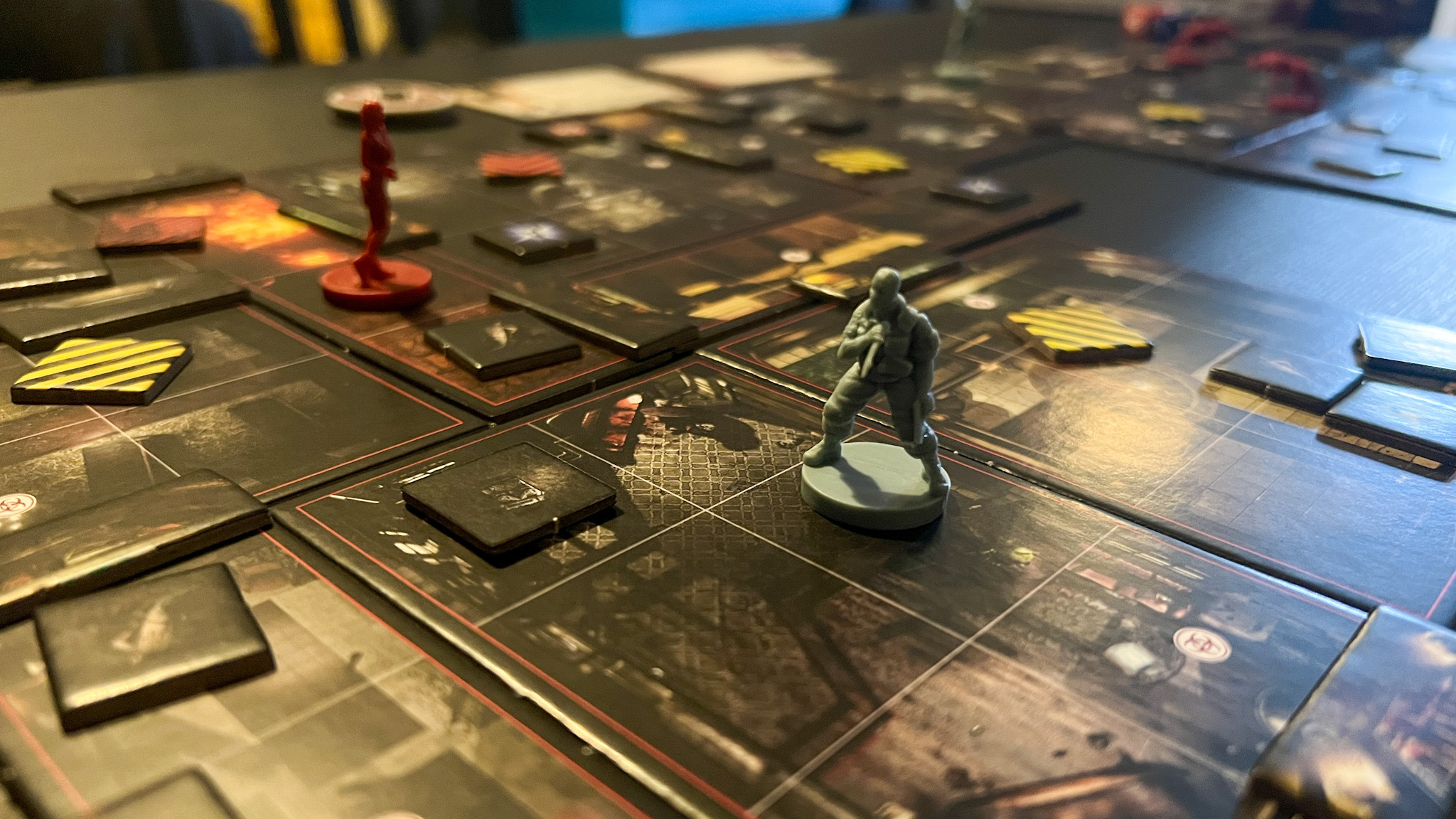
That's what makes getting through that final door in each scenario so satisfying. Whether you're playing alone or with a group, balance between offensive and defensive strategies has to be so finely struck that making it through each goal feels like a real achievement. Even if you're at the end of your scenario and simply heading out towards the goal, there's always new threats to fear as you take that classic Resi sprint at the finish line.
On viewing the main campaign, I was a little concerned about the replayability of Resident Evil 3. However, after digging into the mechanics, particularly around the tension deck, it's obvious that no two runs will stick to the same playbook. There's plenty of potential for fresh situations with each playthrough, especially considering a couple of scenarios pop in and out depending on the decisions you made in earlier parts of the campaign.
It feels like a brand new way to interact with the lore and ethos of Resident Evil's world
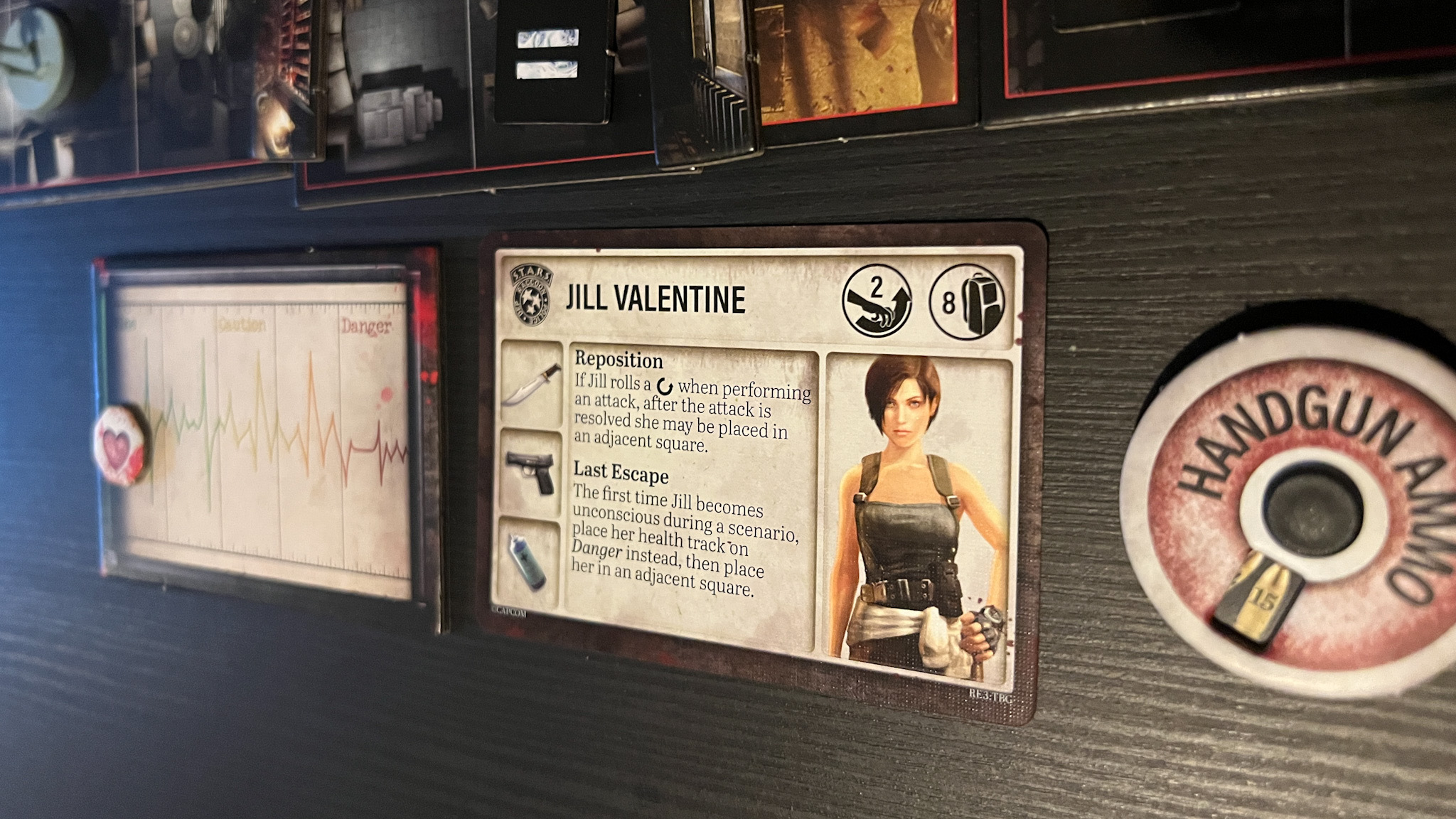
Overall, Resident Evil 3: The Board Game mixes an incredible atmosphere with thoughtful and engaging gameplay to offer up a faithful representation of the classic game. From mirroring the main campaign to the mechanics at play to the tension of each footstep, the tabletop experience is more than an add-on to the full experience; it feels like a brand-new way to interact with the lore and ethos of Resident Evil's world. Of course, it helps that the classic 'This game contains scenes of explicit violence and gore’ title screen waiting for you when you open the box as well. If ever there was a board game for adults, it's this one.
Should you buy Resident Evil 3: The Board Game?

Fans of the series should absolutely dive into the tabletop world of Resident Evil 3: The Board Game. You don't need to have played previous releases to pick up all the mechanics and strategies, and the whole experience feels authentic and well polished. Plenty of reliability and a solid campaign will see you through hours of play, with an incredible atmosphere and that magic 'Resi' touch that so few zombie games have managed to capture.
If you're looking to jump straight in, though, be warned - setup is fairly long and will require some hunting through the box to get fully ready. This is no impulse play.

Managing Editor of Hardware at GamesRadar+, I originally landed in hardware at our sister site TechRadar before moving over to GamesRadar. In between, I've written for Tom’s Guide, Wireframe, The Indie Game Website and That Video Game Blog, covering everything from the PS5 launch to the Apple Pencil. Now, i'm focused on Nintendo Switch, gaming laptops (and the keyboards, headsets and mice that come with them), PS5, and trying to find the perfect projector.
